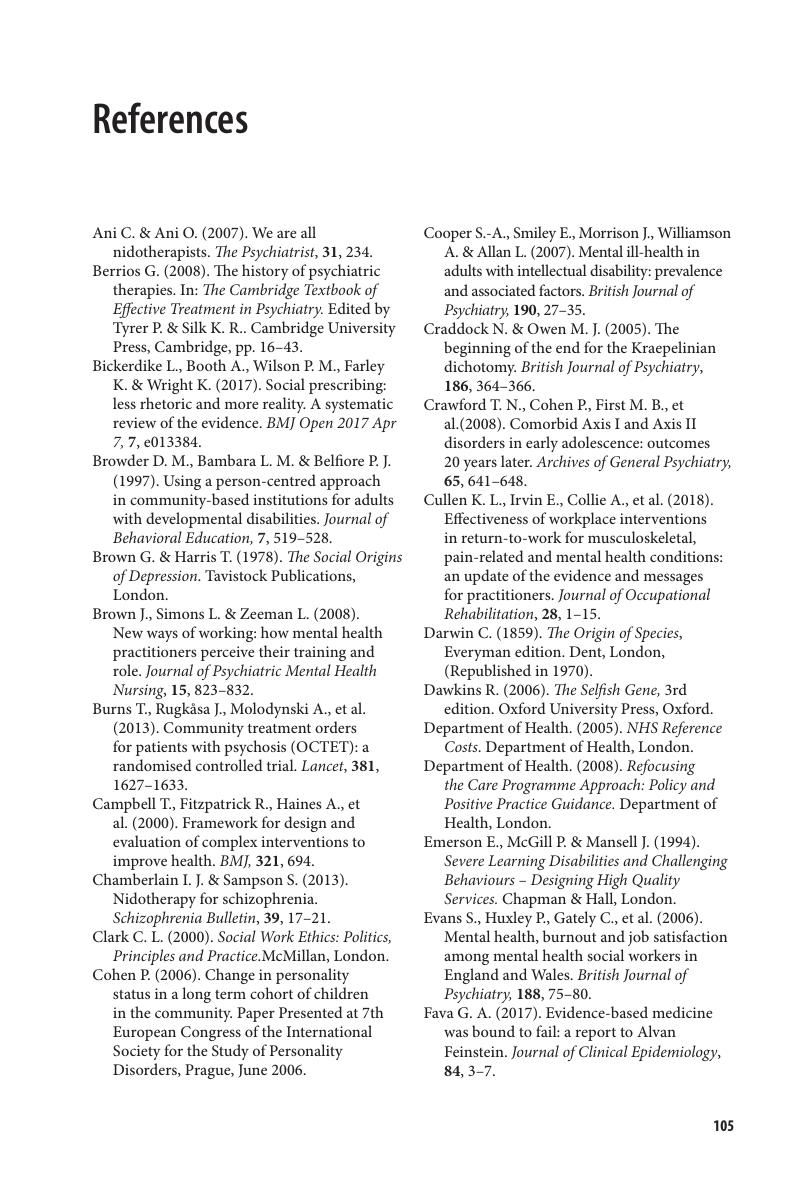Book contents
- Nidotherapy
- Nidotherapy
- Copyright page
- Dedication
- Contents
- Foreword
- Preface to the Second Edition
- Acknowledgements
- Authors’ Note
- Introduction
- Chapter 1 The General Philosophical Principles of Nidotherapy
- Chapter 2 Assessing the Patient for Nidotherapy
- Chapter 3 The Four Phases of Nidotherapy
- Chapter 4 Methods of Delivering Treatment
- Chapter 5 Nidotherapy for People with Intellectual Disability and Dementia
- Chapter 6 How to Develop Skills in Nidotherapy
- Chapter 7 What Are the Qualities of a Good Nidotherapist?
- Chapter 8 Nidotherapy, Physical and Occupational Health and Social Care
- Chapter 9 Research Evidence
- Chapter 10 Economic Benefits of Nidotherapy
- Chapter 11 Common Misconceptions about Nidotherapy
- Postscript
- References
- Index
- References
References
Published online by Cambridge University Press: 21 December 2018
- Nidotherapy
- Nidotherapy
- Copyright page
- Dedication
- Contents
- Foreword
- Preface to the Second Edition
- Acknowledgements
- Authors’ Note
- Introduction
- Chapter 1 The General Philosophical Principles of Nidotherapy
- Chapter 2 Assessing the Patient for Nidotherapy
- Chapter 3 The Four Phases of Nidotherapy
- Chapter 4 Methods of Delivering Treatment
- Chapter 5 Nidotherapy for People with Intellectual Disability and Dementia
- Chapter 6 How to Develop Skills in Nidotherapy
- Chapter 7 What Are the Qualities of a Good Nidotherapist?
- Chapter 8 Nidotherapy, Physical and Occupational Health and Social Care
- Chapter 9 Research Evidence
- Chapter 10 Economic Benefits of Nidotherapy
- Chapter 11 Common Misconceptions about Nidotherapy
- Postscript
- References
- Index
- References
Summary

- Type
- Chapter
- Information
- NidotherapyHarmonising the Environment with the Patient, pp. 105 - 108Publisher: Cambridge University PressPrint publication year: 2018



